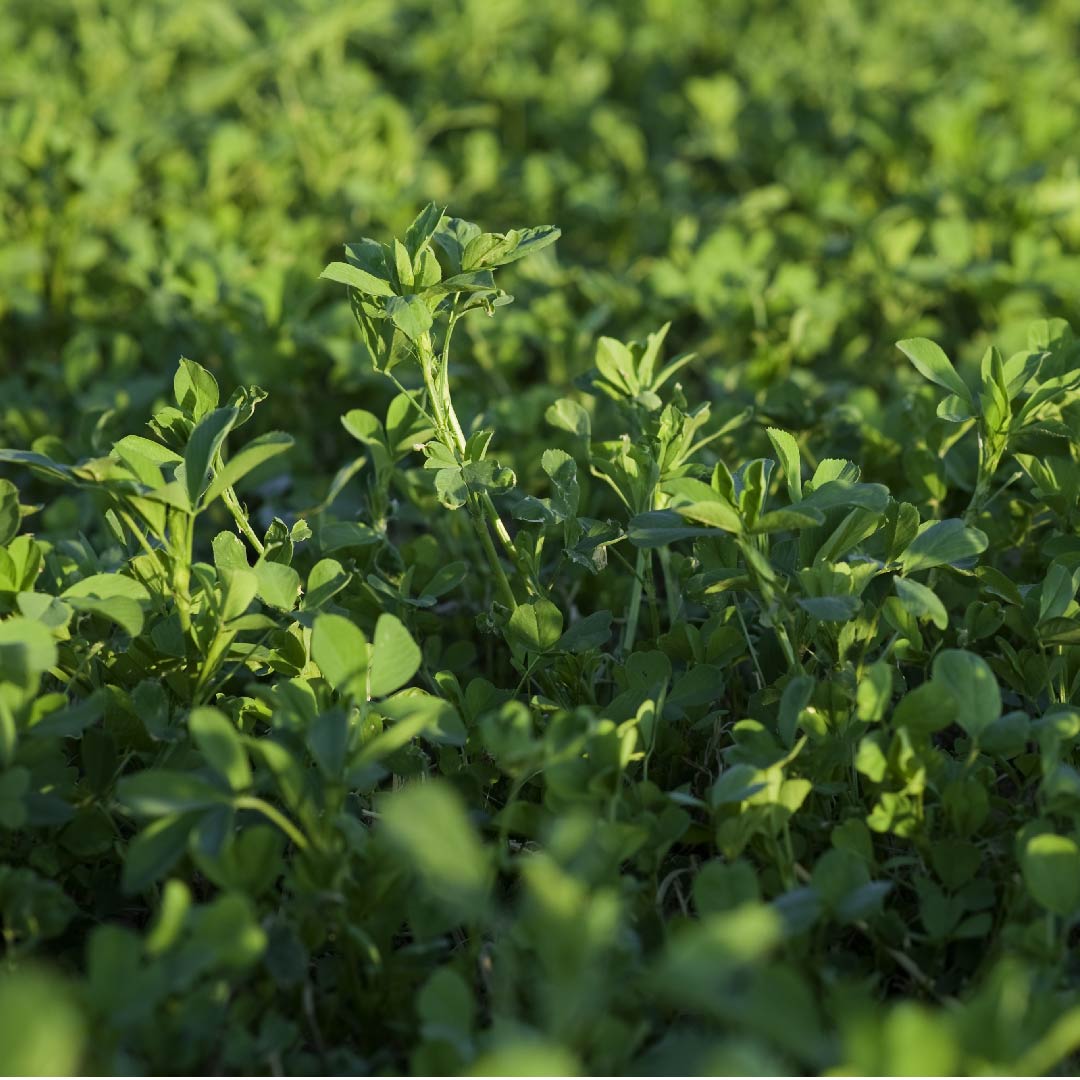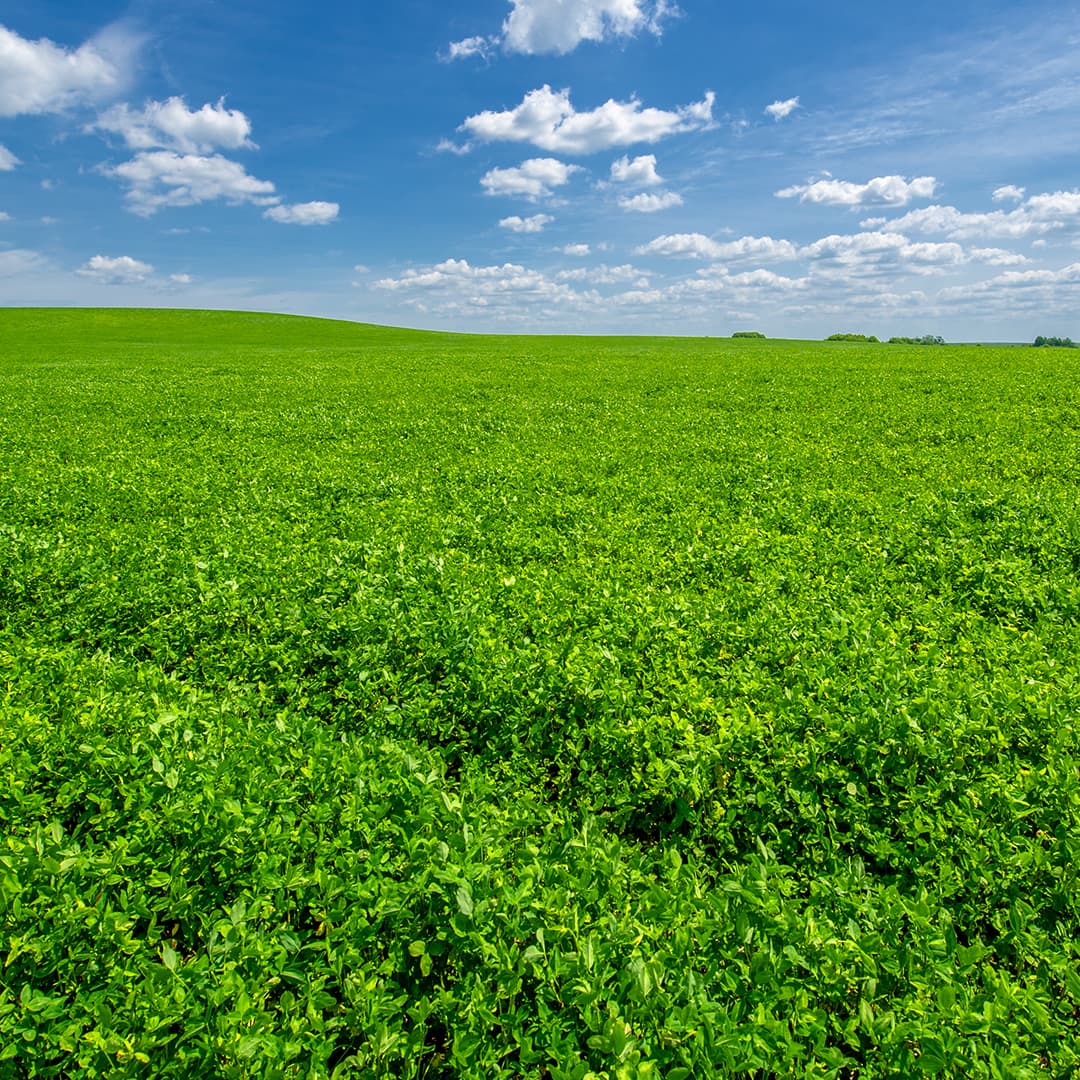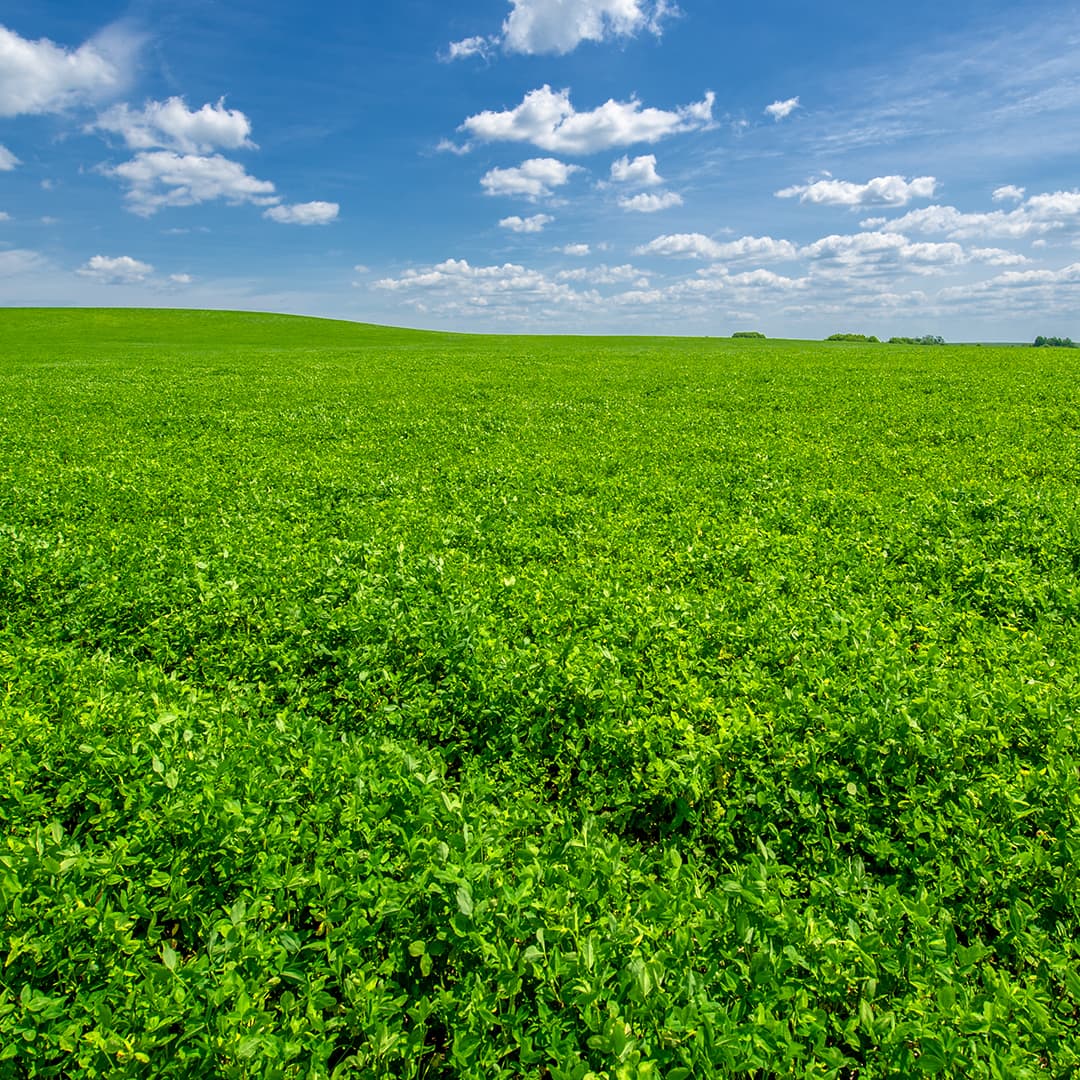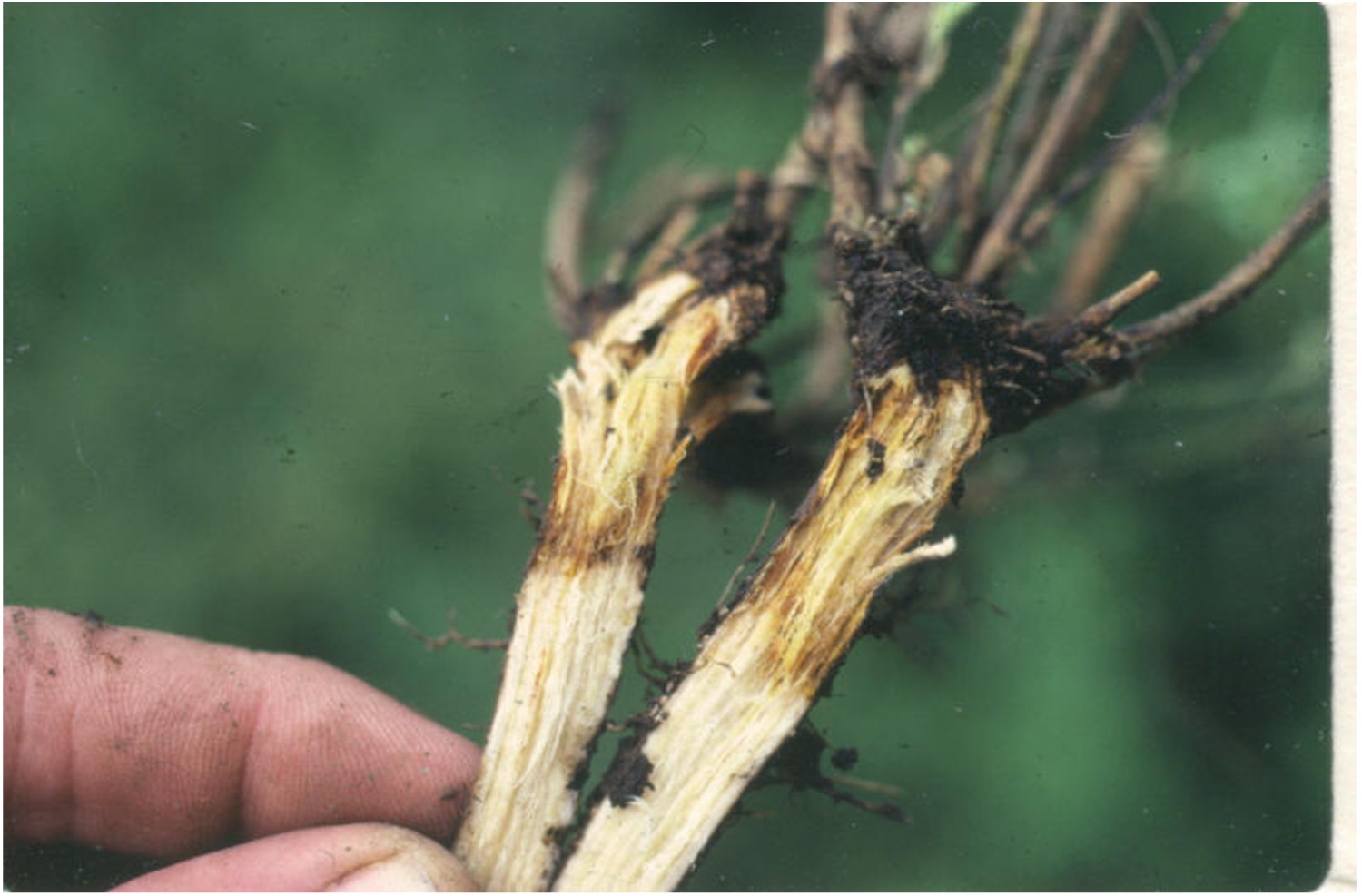Over the past several years, there has been a decline in alfalfa acres being planted across the country. From drought to labor needs, there are several key factors challenging alfalfa growers. But are the benefits enough to justify taking on those obstacles? From improving soil properties to being a powerhouse ingredient in feed rations, alfalfa has a lot to offer.
“Nutritionally, alfalfa has a higher protein and higher rumen degradable protein content than other forages. Really, no other forage comes close. That’s important because higher rumen degradable protein content is what supplies most of the nitrogen requirement for the microbes in the rumen, which in turn supplies about 50% of the protein requirement in dairy cows. In beef cattle, that figure is even higher,” said Weakley.
“That brings up another point: drought,” added Kirk Whittig, FGI account manager based in the Intermountain West and Pacific Northwest. “You can let your alfalfa go summer dormant during a dry period, and it will come back when it gets some moisture. There aren’t many crops you can do that with.”
“Think about it: If you can cut 3 tons per acre on your first cutting and you get $250 per ton for it, that’s $750 per acre you’re getting in gross income in May when you’re about to spend a lot of money on your corn,” explained Hase.
“If you use the average price of alfalfa right now, which is around $250 per ton, and an average yield of 8 tons per acre, that’s $2,000 in profit per acre with virtually no nitrogen expense and minimal other inputs needed. With corn, you’re lucky to make $300-400 per acre. Why wouldn’t you be planting hay?” said Hase.
While some growers may be pulling back on alfalfa, there are many valuable reasons to keep it in the rotation. Your local alfalfa dealer can help you set a strategic plan to maximize the benefits and overcome the headwinds.
© Forage Genetics International, LLC.
Soil Health
Since it’s a perennial crop, alfalfa offers similar benefits to many cover crops. It helps reduce soil erosion and helps growers reduce tillage since they don’t have to make their annual tillage passes for the 3-7 years there is an established alfalfa stand. With its deep rooting system, alfalfa can also help improve soil structure and other physical properties as well as provide carbon sequestration deep into the ground.Nitrogen Savings
As a legume, alfalfa naturally fixes nitrogen. The fixed nitrogen remains in the soil and has the potential, if managed correctly, to supply the majority of nitrogen to the following crop. In some cases, it can even provide some nitrogen credits into the second year after stand termination, reducing future nitrogen costs.Dairy Nutrition Benefits
Alfalfa serves as an ideal base for a ruminant diet. With a number of nutritional benefits, David Weakley, director of dairy forage nutrition research for FGI, points to three key advantages:- Alfalfa has a relatively low fiber content measure by neutral detergent fiber (NDF). This allows it to take up less space and create less fill in the rumen, allowing more space for higher intake of the entire diet.
- It has a higher cation exchange capacity (CEC) than most forages. This is important because it maintains a higher metabolic pH in the animal, which helps support the opportunity for higher milk fat production.
- Alfalfa can stimulate cud chewing better than corn silage, which optimizes milk fat production.
“Nutritionally, alfalfa has a higher protein and higher rumen degradable protein content than other forages. Really, no other forage comes close. That’s important because higher rumen degradable protein content is what supplies most of the nitrogen requirement for the microbes in the rumen, which in turn supplies about 50% of the protein requirement in dairy cows. In beef cattle, that figure is even higher,” said Weakley.
Risk Mitigation
“I’m an advocate for keeping a certain percentage of your acres in alfalfa. In my area, we get a lot of hail, and alfalfa offers a kind of hail insurance,” shared Jeff Hase, Forage Genetics International (FGI) account manager based in the High Plains. “If an alfalfa field gets hail damage, it’s not a big deal because it will grow back 28 days later. If corn gets hailed out, depending on where it’s at developmentally, it could be done for the season.”“That brings up another point: drought,” added Kirk Whittig, FGI account manager based in the Intermountain West and Pacific Northwest. “You can let your alfalfa go summer dormant during a dry period, and it will come back when it gets some moisture. There aren’t many crops you can do that with.”
Cash Flow
With multiple cuttings harvested throughout the summer, alfalfa also provides a steady stream of revenue during a time other crops typically aren’t bringing profit in.“Think about it: If you can cut 3 tons per acre on your first cutting and you get $250 per ton for it, that’s $750 per acre you’re getting in gross income in May when you’re about to spend a lot of money on your corn,” explained Hase.
High Demand and Prices
Alfalfa demand is strong, and prices are holding high. For growers who manage their acres wisely, there is plenty of money to be made in alfalfa.“If you use the average price of alfalfa right now, which is around $250 per ton, and an average yield of 8 tons per acre, that’s $2,000 in profit per acre with virtually no nitrogen expense and minimal other inputs needed. With corn, you’re lucky to make $300-400 per acre. Why wouldn’t you be planting hay?” said Hase.
Alfalfa Challenges
Despite all the benefits listed above, there are some difficult realities to growing alfalfa, especially for growers looking to get started with it. For example, dry conditions can make it challenging to establish and it takes a lot of time and labor to manage compared to other crops. Small grains like triticale can be an attractive quick fix for growers facing a forage shortage but they have to be planted annually. An alfalfa stand can last multiple years and provides higher quality forage than small grain alternatives.While some growers may be pulling back on alfalfa, there are many valuable reasons to keep it in the rotation. Your local alfalfa dealer can help you set a strategic plan to maximize the benefits and overcome the headwinds.
© Forage Genetics International, LLC.



